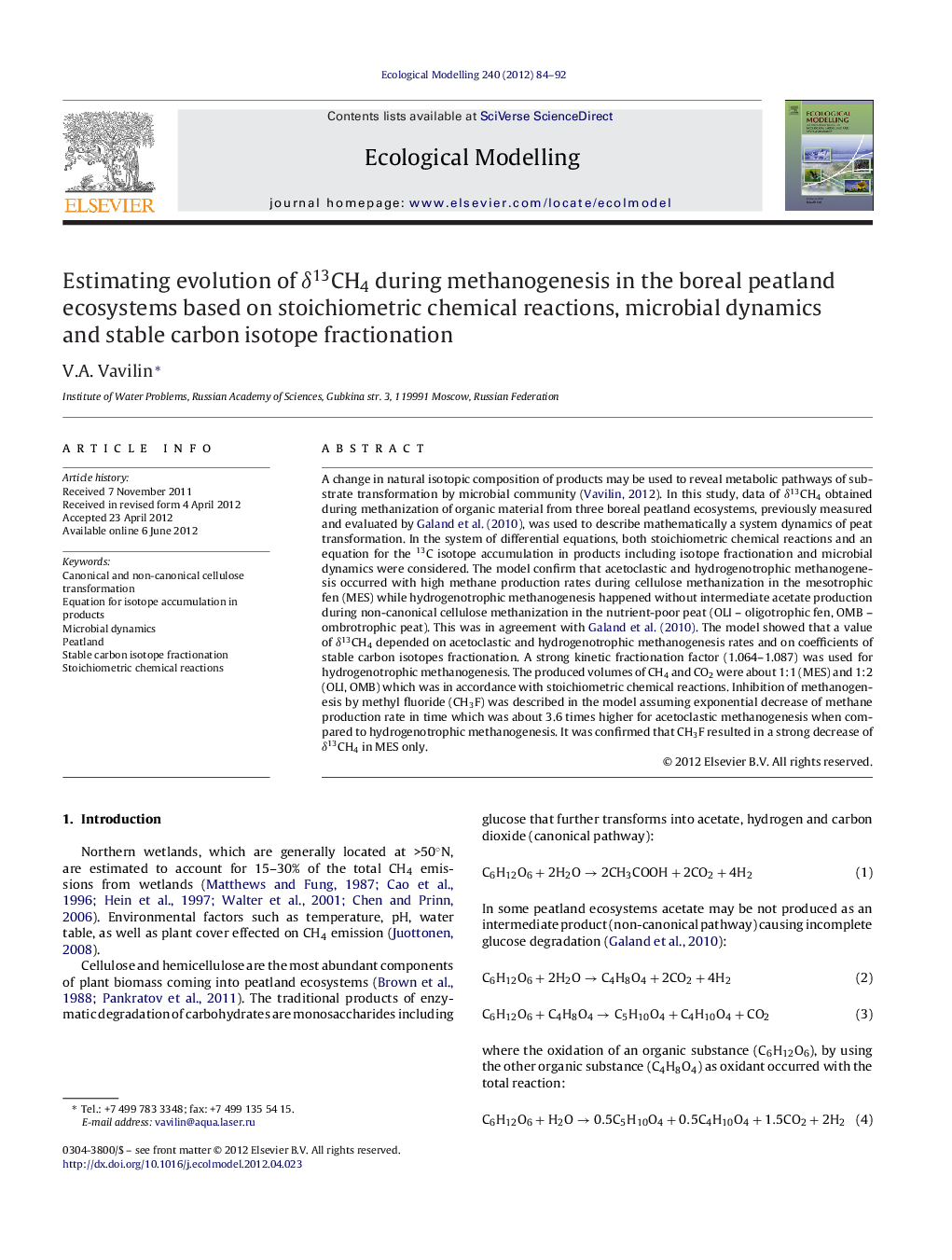| کد مقاله | کد نشریه | سال انتشار | مقاله انگلیسی | نسخه تمام متن |
|---|---|---|---|---|
| 4376415 | 1617505 | 2012 | 9 صفحه PDF | دانلود رایگان |

A change in natural isotopic composition of products may be used to reveal metabolic pathways of substrate transformation by microbial community (Vavilin, 2012). In this study, data of δ13CH4 obtained during methanization of organic material from three boreal peatland ecosystems, previously measured and evaluated by Galand et al. (2010), was used to describe mathematically a system dynamics of peat transformation. In the system of differential equations, both stoichiometric chemical reactions and an equation for the 13C isotope accumulation in products including isotope fractionation and microbial dynamics were considered. The model confirm that acetoclastic and hydrogenotrophic methanogenesis occurred with high methane production rates during cellulose methanization in the mesotrophic fen (MES) while hydrogenotrophic methanogenesis happened without intermediate acetate production during non-canonical cellulose methanization in the nutrient-poor peat (OLI – oligotrophic fen, OMB – ombrotrophic peat). This was in agreement with Galand et al. (2010). The model showed that a value of δ13CH4 depended on acetoclastic and hydrogenotrophic methanogenesis rates and on coefficients of stable carbon isotopes fractionation. A strong kinetic fractionation factor (1.064–1.087) was used for hydrogenotrophic methanogenesis. The produced volumes of CH4 and CO2 were about 1:1 (MES) and 1:2 (OLI, OMB) which was in accordance with stoichiometric chemical reactions. Inhibition of methanogenesis by methyl fluoride (CH3F) was described in the model assuming exponential decrease of methane production rate in time which was about 3.6 times higher for acetoclastic methanogenesis when compared to hydrogenotrophic methanogenesis. It was confirmed that CH3F resulted in a strong decrease of δ13CH4 in MES only.
► Non-canonical cellulose biodegradation in the boreal peatland ecosystems.
► Equation for C13 accumulation in products including stable isotope fractionation.
► Delta 13CH4 depended on rates of acetoclastic and hydrogenotrophic methanogenesis.
► In the mesotrophic fen acetoclastic and hydrogenotrophic methanogenesis occurred.
► For the nutrient-poor peat hydrogenotrophic methanogenesis dominated.
Journal: Ecological Modelling - Volume 240, 10 August 2012, Pages 84–92